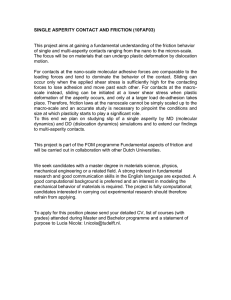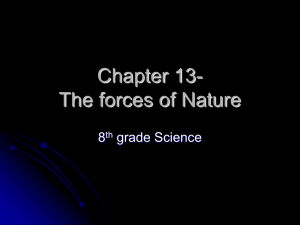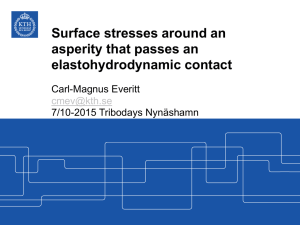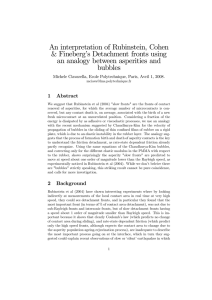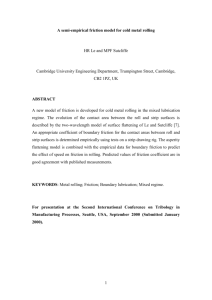Modeling Static Friction of Rubber
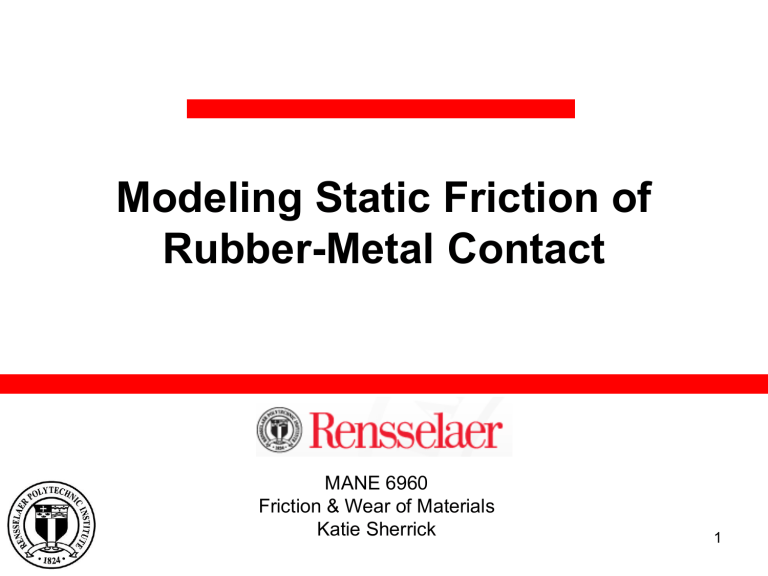
Modeling Static Friction of
Rubber-Metal Contact
MANE 6960
Friction & Wear of Materials
Katie Sherrick
1
Introduction
• Most laws of friction are based on metalmetal contact
• Elastomer-metal contacts do not have the same friction properties as traditional friction laws would indicate
• Differences in elastomer-metal contact friction are due primarily to the viscoelastic nature of the elastomer
2
Single-Asperity Contact
3
Contact Pressure: Elastic-Rigid
Hertzian Contact
P
δ
G = shear modulus (sphere) a = contact radius
4
Viscoelasticity
• Rubber and elastomeric materials are viscoelastic in behavior exhibit both viscous and elastic properties when undergoing deformation
• Time-dependent strain
5
SLS Model
• Standard Linear Solid (Zener) d
E
2 dt
d
E
2 dt
E
1
E
2
E
1
More accurate than the Kelvin or Maxwell models for elastomeric materials
Accounts for both creep and stress relaxation
6
Normal Viscoelastic-Rigid Single Asperity Contact
• Correspondence principle elastic solution is used to obtain viscoelastic
7
Tangential Loading
If tangential load Q is applied to the normally-loaded asperity couple, the distribution of shear stresses is per Mindlin: c is radius of the stick zone
Q
Limiting displacement for an asperity couple: Q = μP
P
δ
8
Static Friction Force
9
Model Validation
4,00E-07
3,50E-07
3,00E-07
2,50E-07
2,00E-07
1,50E-07
1,00E-07
5,00E-08
0,00E+00
Static Friction Force as a function of Normal Approach ( δ n
)
Normal Approach (m)
10
Multi-Asperity Contact Mechanics
• Contact between rubber-like material and metal is simulated for the load-controlled case
• The asperity interactions depend on surface roughness parameters (Greenwood &
Williamson)
– Average summit radius β
– Standard deviation of summit heights σ
– Summit density η s
11
Multi-Asperity Modeling
• Depending on compression of each asperity couple, each individual couple is either:
– Partial slip
– Full slide
• A critical asperity height is calculated: d = surface separation
σ= std. dev of summit heights
δ t
= tangential displacement
12
Multi-Asperity Modeling
• All contacts with a height larger than s cr are in partial slip regime
• The total friction force is a summation of the full slide and partial slip regimes:
Friction force for viscoelastic contact are calculated by substituting the appropriate operator for G in this equation
Φ(s) is the normalized Gaussian asperity height distribution
13
Multi-Asperity Modeling
• When F partially-slip
= 0, all asperities in contact are in full slide max friction force is reached
• Calculated using either the load-controlled or displacement-controlled single-asperity contact models
14
Multi-Asperity Results
Material Properties Effect of Surface Roughness
Model results are comparable to experimental values at low pressures
15
Questions?
16
